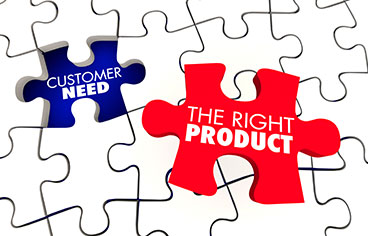Insights | By Howard Tiersky
HOW TO AVOID PRODUCT FAILURE
No product is designed with the intent to be a failure. And yet many fail. According to Nielsen, 85% of new products fail in the marketplace.
In order to build and launch a product that will be successful, you’ll need to get the details of your product aligned accurately with the needs of your customers.
This is something that I learned the hard way.
Early in my career, I was given the opportunity to lead a product development team assigned to create a new digital communication platform for accounting firms.
Our target users were auditors and tax consultants. Since we had worked with those types of people periodically, and thought we were pretty smart, we felt we knew what they needed.
We went into the project with some big ideas and quickly landed on a vision for the product that we loved. It was innovative, creative, and exciting.
The image of the user interface still brings a smile to my face as I write this; it was so cool. The team was devoted to the product and its potential.
We worked 18-hour days for months on our mission. I barely saw my wife during that time.
When I did, I told her passionately about the progress we were making and how awesome the product was going to be. In retrospect, I’m pretty sure she got tired of hearing about it.
Finally, the product launched! We were so excited to share it with the world. What happened?

The features we thought were so fantastic just weren’t important to our users. And in our passion to deliver those innovative features, we had overlooked some of their more basic, critical needs.
Also, because we didn’t fully understand the circumstances under which the product would be used, it had some major usability problems.
It worked great for us on the product development team, but the users weren’t like us.
In short, it was a disaster. In less than a week, we went from visions of world domination to our sponsors telling us they were “pulling the plug.”
I still remember that meeting as one of the low moments of my life. While we couldn’t believe it at the time, it was entirely predictable.
We fell in love with our idea instead of our users. We wanted our product to fulfill its potential instead of thinking about how to help our customers fulfill theirs.
We held a common misconception about how customer experience works.
Here is how I thought customer experience innovation worked when I was developing the product for the accounting firm.

This approach almost never succeeds. It’s based on the assumption that the user will love whatever your creative mind dreams up.
That’s how art works (when it works), but that’s not how business works. It’s not the recipe that makes customers love your products or brands.

That doesn’t mean there isn’t room for a lot of creativity in designing new customer experiences. In fact, it’s essential. But a different process needs to be followed. Thinking back to my accounting product, had we poured all our passion, long hours, and skill into the right process instead of expecting customers to love the product of our intuition, who knows what we could have achieved?
What is the right process? It’s a customer-centric approach. And the focus should be to meet our customers’ needs consistently, not bring to life the fruits of our imagination.

In my Wall Street Journal bestselling book, WINNING DIGITAL CUSTOMERS: THE ANTIDOTE TO IRRELEVANCE, I talk extensively about a wide range of techniques you can use to ensure the products you create resonate with customers and win in the marketplace. You can click this link https://WinningDigitalCustomers.com to get the first chapter of the book for FREE.





